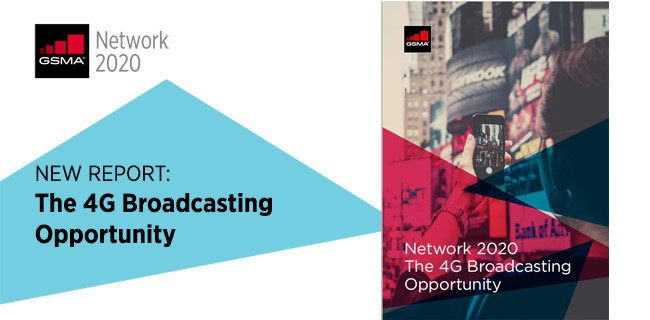 |
By Michele Zarri, Technical Director, GSMA |
The LTE Broadcast Opportunity
The GSMA has released a new report today called ‘The Broadcast Opportunity’ highlighting how mobile network operators can take advantage of a broadcast technology called ‘Evolved Multicast Broadcast Multimedia Service’ (eMBMS) which is also commonly referred to as LTE-Broadcast (LTE B). The rise in LTE network deployments and the adoption of smartphones has seen an explosion in consumers viewing mobile video content such as live TV, time-shifted TV, on-demand video as well as YouTube videos. Recent research by Cisco estimates that this will represent 75% of all mobile traffic by 2020.
eMBMS enables point-to-multipoint communication which means that the same transmission or content can reach any user in the transmission area. It means that mobile operators can scale broadcasting services to a virtually unlimited number of users who can access the same content at the same time. It also represents an opportunity for operators to add value in multiple areas, generate new revenue streams and efficiently use the scarce radio resources. eMBMs has a number of different use cases including streaming real-time video content to smartphones such as sporting events as well as the delivery of content that is relevant to specific locations such as concerts or music festivals. It can also be used to deliver non-delay-sensitive content such as a software update at times when the network is not congested. It has taken a while for the technology to mature but it is now on its fifth release and offers a stable performance and feature set that makes the provision of broadcast services over mobile networks much more feasible.
eMBMS also enables the provision of new types of services such as the delivery of multi-camera views of sporting events to smartphones that are not feasible using a standard unicast transmission which can only send data to a single recipient on a network. eMBMS can also be used to deliver existing services such as the maintenance of digital signage or updating the software on IoT devices. It also opens up new ways for content providers and advertisers to reach mobile users, for example by offering access to premium content or advertising at a tourist information carousel.
There are already a number of commercial services and trials being held by network operators. However, there are a few obstacles preventing its further adoption such as the high upfront deployment costs relating to the core network and the radio network. Moreover, at present only a small percentage of commercially available devices support eMBMS and they are all Android devices.
The Business Opportunity
The ability to broadcast content presents operators with business models not previously available to them on traditional networks. These are highlighted below:
- Localised live broadcast: This refers to the broadcasting at live events such as sports events or concerts such as providing better views or additional information about what is happening to the audience. This could be up-close shots of athletes or musicians or instant replays.
- Live TV Streaming: This refers to the use of broadcast technology for streaming of live TV such as news which can be offered as a subscription service or as a pay per view service for particular events.
- Audiostreaming: Audiostreaming is similar to traditional FM/AM radio channels except LTE Broadcast can replace these radio channels and provide higher quality audio with new types of multimedia content. LTE Broadcast also enables operators to broadcast even in crowded areas as well as tailor the content to the targeted area.
- Software updates: This refers to scheduled software updates such as software or firmware that are scheduled rather than downloaded at the time of request. This allows for example, to perform non-time critical broadcasting without negatively affecting traffic.
- Content pre-positioning: Content pre-positioning refers to the use of broadcast technology to download popular media contents on device before it is consumed.
- Location specific broadcasting: This is where information from local shops or venues is broadcasted to devices in proximity. So, for example, local shops could broadcast shopping information and offers to the people nearby which could provide an extra push for those people to walk into the shop.
- Content sharing in OTT application groups: It is becoming common for individual users to generate multi-media content such as video clips intended for a closed user group. Given the nature of this type of group there are chances that its members are clustered in a small area therefore making the distribution via broadcasting efficient.
The GSMA’s Network 2020 programme works closely with global mobile operators helping them to make the move to an all-IP infrastructure where they can take advantage of services like LTE Broadcast. In particular, the GSMA is working to encourage all device vendors to support eMBMS natively. Read more and download the report here.

